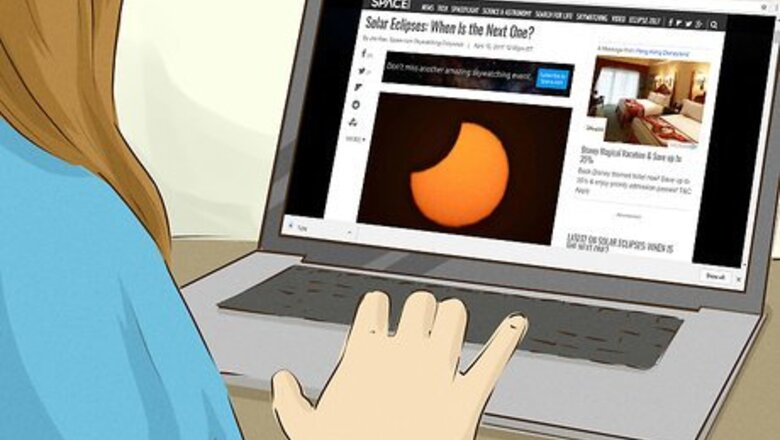
views
Viewing a Solar Eclipse
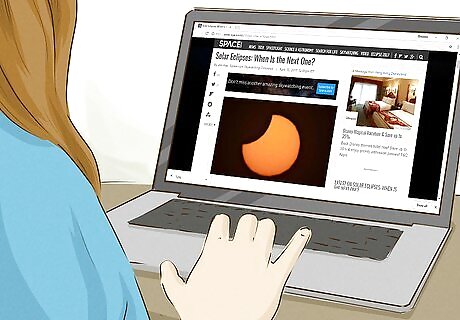
Read about a solar eclipse. Solar eclipses occur when the sun, the moon, and the Earth are all in alignment allowing the moon to block the sunlight from reaching the Earth. Solar eclipses are observed as a total or partial eclipse, depending on whether or not you're located in the "umbra", the place where the moon's shadow hits a small point of Earth, or the "penumbra", the part outside of the umbra. The amount of time a total eclipse lasts can be from a few seconds to a maximum of seven and half minutes, as the umbra moves along the "path of totality". There is also an "annular eclipse" when the moon slides across the sun, but doesn't completely cover it. Total solar eclipses are possible because the sun is 400 times further away from Earth than the moon and 400 times larger than the moon, allowing the sun and moon to appear to be almost the same size from our perspective of the sky.

Be aware of the methods that shouldn't be used for viewing a solar eclipse. You shouldn't look at eclipses through binoculars, telescopes, any type of glasses, sunglasses, smoked glass, polarizing filters, or exposed color film – none of these methods are strong enough to protect your eyes. Although the light wavelengths visible to the human eye are blocked by these objects, it is the non-visible light that causes damage to the eye; the ultraviolet and infrared wavelengths still get through and cause just as much damage as the visible light.
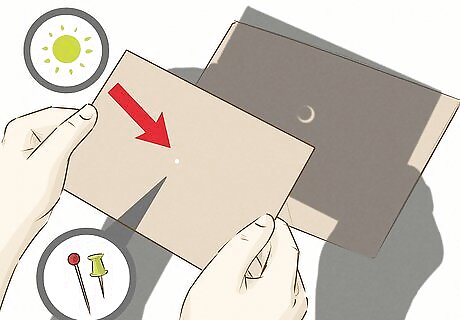
Make an eclipse viewer or a pinhole projector. A homemade eclipse viewer or pinhole viewer is very simply done and, generally speaking, it is the easiest and safest way to view an eclipse for just the price of some thick poster paper or cardstock. Its drawback is the very small image it produces, but this one is ideal for children and young teens who will enjoy the process of preparing the pinhole projector and then using it. Poke a small hole using a pin or thumbtack through the center of a piece of cardstock. Place a second piece of paper on the ground to serve as the screen you will be projecting the eclipse onto. Standing with your back to the sun, hold the card a few feet off the ground above your shoulder or to your side. Make sure your head is not covering up the hole. It should be held in the direction of the sun and you should be facing the screen you placed on the ground. When the projector is properly aligned, you should see a perfect circle on the other piece of card you placed on the ground. The circle may appear fuzzy at the edges. You can bring it into sharper focus by moving the pinhole projector closer or further away from the ground. When the eclipse takes place, that circle will shrink and turn into a crescent, if it is a partial eclipse. If it is a total eclipse, then it will turn into a thin-lined O. You can also use a pinhole camera for eclipse viewing.
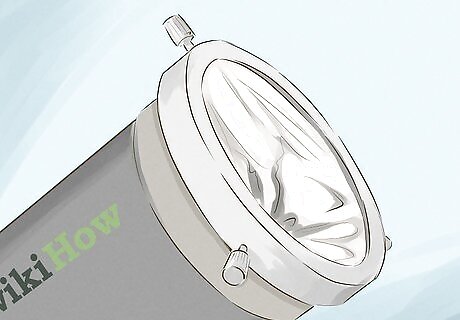
Use a solar filter on your viewing equipment. If you choose to look at the sun with your eyes (rather than by projecting the sun onto something else), then you must always have a solar filter between you and the eclipse. While it is possible to view a total solar eclipse without protection during totality, only an experienced observer will know when to judge this moment accurately and when it is essential to immediately place the filter between your eyes and the eclipse again: before the sun reappears. Since most eclipses are partial and most observers are novices, it is much safer to only look at the eclipse through a solar filter; even the briefest flash of sunlight can damage your eyesight, so even 99.9 percent of coverage of the sun is dangerous. Solar filters are available for all viewing equipment (camera, binoculars, and telescope). When selecting a solar filter for a telescope or binoculars, it is absolutely vital that you choose a filter made for your exact model and brand. If the filter does not fit properly, or is used incorrectly, permanent eye damage can occur.
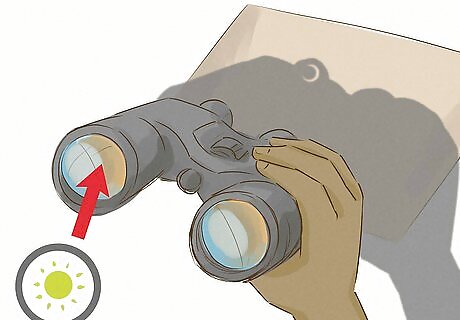
View an eclipse indirectly by making a projection. Projection of the eclipse image through binoculars or a telescope is another safe method to view the eclipse indirectly. However, it is only safe if you use it for projection, not for looking through – do NOT look through the binoculars or telescope doing the projecting! Cover the front objective lens of one side of the binoculars with a piece of cardboard or a lens cap. With your back to the sun, hold the binoculars with one hand and aim them towards the eclipse so that the uncovered lens picks up the eclipse. Use the shadow of the binoculars to help you align the binoculars. Watch the image projected back onto a screen, wall, or large piece of white paper that you're holding in your free hand. It should be situated about one foot from the binocular’s eyepiece. Just move the binoculars around until the eclipse image appears on the card, screen, or wall. The further you hold the card away from the eyepiece, the larger the image will be. When you get used to using this method, try fixing the binoculars to something like a tripod or propping them up against a chair or table. The image will benefit from the increased steadiness. If you're using this method to observe the sun during a non-eclipse time, shift the binoculars away from the sun every minute to prevent overheating of the equipment. Let the optical equipment cool down for a few minutes before trying again.

Use welder's glass. Shade number 14 (or higher) welder's glass is one of the most affordable and widely available filters you can use to observe the sun with unaided eyes. The glass must completely cover your eyes at all times of observation. Such a filter can also be added to the front of your binocular objectives. Again, all of the lens must be covered and if it can only cover one lens, cap the other one.
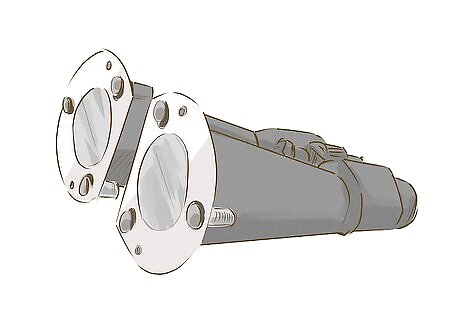
Use mounted filters. There are special types of filters that can be purchased that mount directly onto a telescope or pair of binoculars. While some of these can get quite expensive, there are cheaper versions that will still protect your eyes and allow you to view the sun. There are several important warnings you must take heed of when purchasing and mounting a solar filter: You must be absolutely sure that the filter is a proper solar filter, as ordinary photographic filters will not filter the dangerous rays. The filter must fit your brand and type of equipment perfectly. Always buy the filter from a reputable dealer; if you have any concerns about the safety of the filter, do not use it and if you need advice, take it to your local planetarium or astronomy club for expert advice. Check for surface damage prior to mounting. Mylar is easy to puncture or rip and if that has happened, the filter cannot be used. Be sure that the filter is secure once on; if you need to tape it as well as mount it to ensure that it won't come off or loosen, then do so. Do not use filters that screw into the eyepiece end of binoculars or telescopes. The focused light can burn through or crack the filter at this end owing to the intense heat of the sun being concentrated; just the tiniest crack or separation in the filter can permanently damage your eyes. Only use filters that mount onto the front end of the telescope.
Viewing a Lunar Eclipse
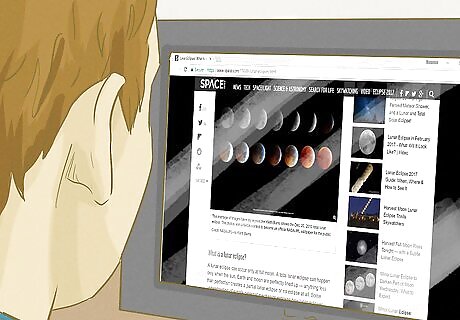
Read about lunar eclipses. Lunar eclipses occur less frequently than total eclipses of the sun, with a lunar eclipse taking place about twice a year, and a total lunar eclipse happening on average every two to three years. A lunar eclipse occurs when the full moon travels into the Earth's shadow and becomes a coppery or dull-red color (a "Blood Moon"). Total lunar eclipses can last for up to an hour and forty minutes, although a lunar eclipse can last for up to six hours when adding in the time taken to pass through the penumbral region. Like solar eclipses, there are total and partial lunar eclipses that depend on the alignment of the Earth, the sun, and the moon.
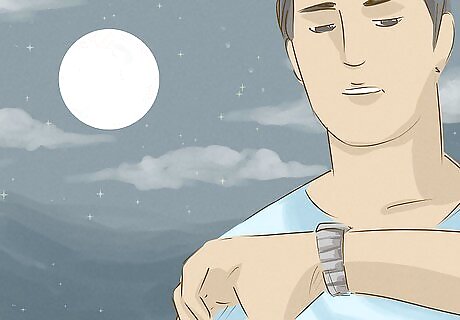
Be prepared to stay up late. A lunar eclipse occurs only during a full moon when it is perfectly aligned with the Earth and the sun. The eclipse happens because the Earth casts a shadow on the moon. Lunar eclipses usually occur late at night over a period of hours as the moon passes in and out of the shadow cast by the Earth. If you want to see the whole thing, you will have to stay up late. The night must be clear and fairly cloud-free for optimal viewing.
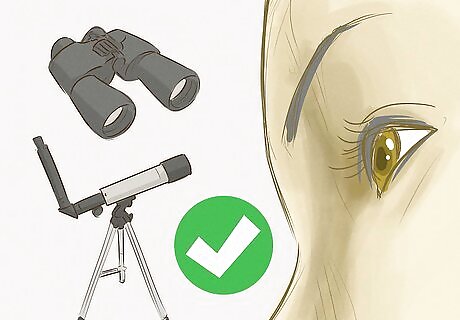
View with your naked eye or through magnifying objects as desired. Lunar eclipses are perfectly safe to observe with your eyes and without a filter. You don’t need any special viewing equipment because you are not looking directly into the sun, you’re actually viewing a projection of the sun onto the moon. Because there is no risk of damage to your eyes from the sun, no special equipment is required. To get a more impressive view of the eclipse, you can look at it through binoculars or a telescope. If you'd like to photograph the lunar eclipse, read How to Photograph the Moon for more details on moon photography or How to Photograph an Eclipse for advice on photographing both solar and lunar eclipses.
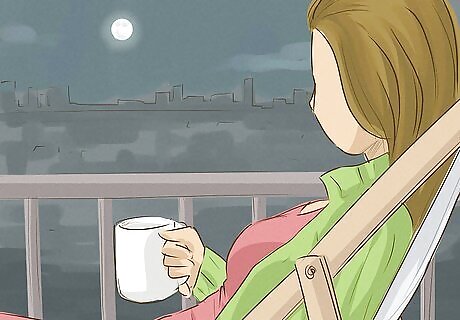
Dress appropriately. Given you'll be viewing at night, the air will probably be colder, so dress warmly and perhaps take along a thermos of something warm to drink. Bring along something comfortable to sit on, as the eclipse will last for over an hour.
Preparing to View an Eclipse
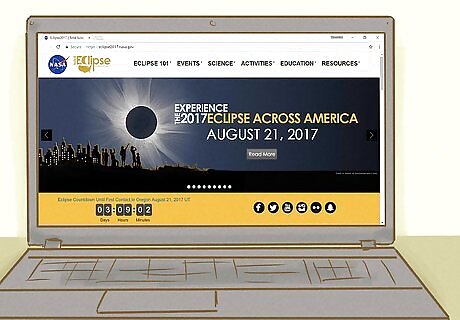
Find out when and where eclipses are happening. It's hard to view eclipses when you're not aware they're happening! One of the best ways of knowing when eclipses will happen is to use the internet and follow updates on reputable sites. In addition, some good astronomy books and periodicals will also keep you updated about forthcoming eclipses. Some of the sites worth keeping an eye on include: NASA Eclipse website here: this has both solar and lunar eclipse details. See also, NASA eclipse path maps through 2020 and through 2040. Some of your favorite science and astronomy information websites and blogs might update you about upcoming eclipses as they're about to happen.

Check the weather forecast leading up to an eclipse. Some weather elements will make it hard to see an eclipse, such as clouds or a storm. If it's clear, you're all set to watch! Use this weather forecast to dress appropriately for the eclipse. If it’s winter and you’ll be watching a lunar eclipse, you’ll want to bundle up to stay warm.
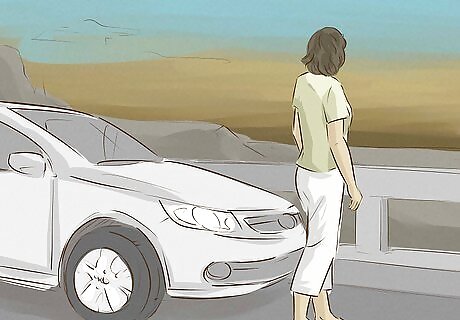
Visit your eclipse viewing site in advance. If it's your own backyard, you'll already be familiar with it, but if you want to go somewhere with a clearer view, check it out before the eclipse. See what the terrain is like, where you can park your car, whether it's likely to be popular with other people, etc. There are actually some key things to look for when selecting a good eclipse-viewing spot: View: Choose a spot with a good view of the horizon to enable you to see approaching and departing shadows. Comfort: Are there restrooms, refreshments, shade options, etc? Accessibility: Is it easy to reach, easy to park, easy to walk around, and so forth? Familiarity: Is it likely to attract busloads of tourists? If there is ease of access for buses, bus parking, and you've seen the site getting buzz on Twitter and Facebook, you might want to find somewhere less well-known and therefore less likely to be crowded! If you know someone who has a farm, ranch, or quiet, open property in the vicinity of the eclipse, consider asking them if they mind you turning up to watch the eclipse.











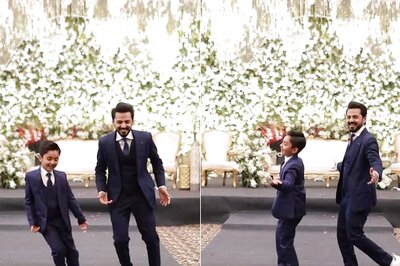


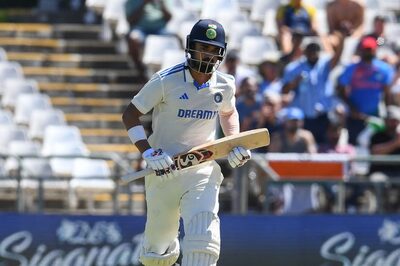
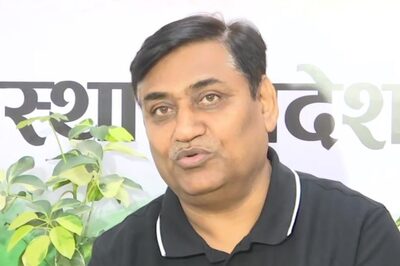

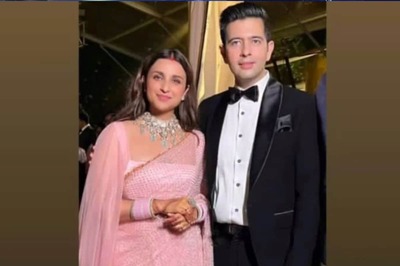
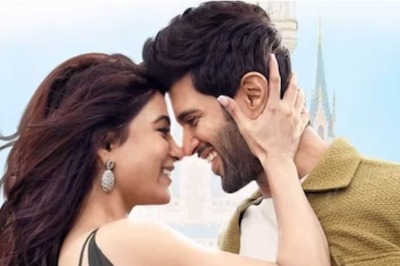

Comments
0 comment